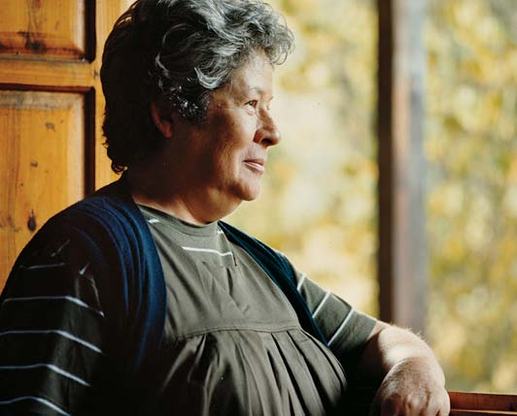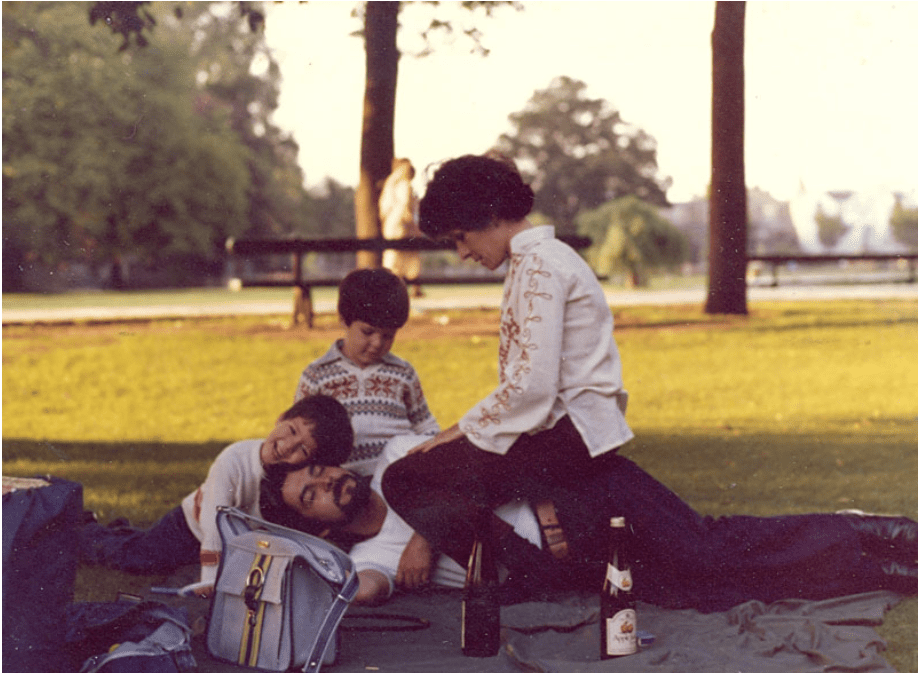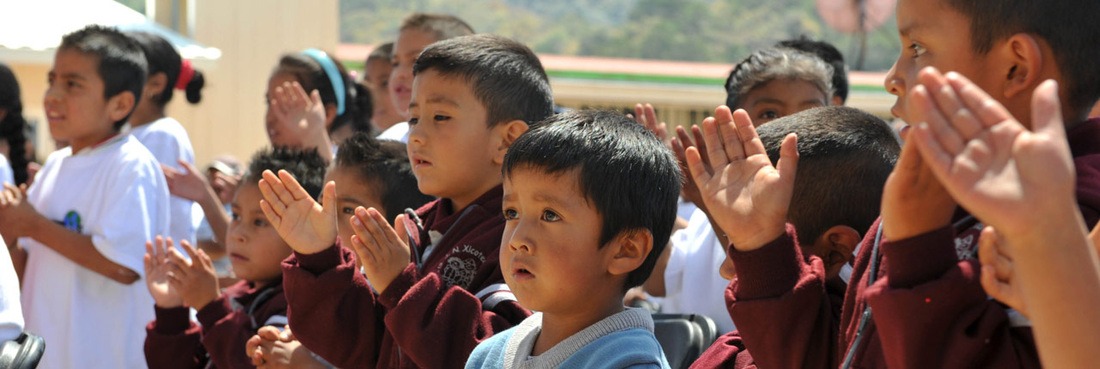Capital Institute: Regenerative Qualities of Grupo Ecológico Sierra Gorda
In Right Relationship / Honors Community & Place / Innovative & Adaptable
|
After living for seven years in the mountains my awareness grew
that I was taking care of something you could call divine.
Read more…
|
We know we have to get back to the world and try very hard to make change on a big scale
to address the way we are destroying the land.
|
In May 2014 we celebrated the seventeenth anniversary of the official government decree making Sierra Gorda—an area representing 32 percent of the state territory—a Biosphere Reserve. It was the culmination of Grupo Ecológico´s work in the five northern counties of Queretaro over the first ten years, carrying out environmental education in the preschools through secondary schools, partnering with local authorities on solid waste management, and reforestations with landowners in the upper watersheds. Through these activities we mobilized a powerful civil conservation movement. The Sierra Gorda Biosphere Reserve is a unique experiment. We are now not only a federally protected area (FPA), we are the only biosphere reserve in Mexico with a participatory model for civil society management. Instead of bureaucrats or biologists from outside the region being brought in to manage our affairs, President Zedillo changed the normal FPA protocol by appointing a Biosphere Reserve director from local leadership. I was the first of those directors creating a synergy between the local civil movement and the federal decree (appointed by our then president Dr. Ernesto Zedillo). I was a public servant for fourteen years in that role, with the Reserve part of the National Commission of Natural Protected Areas (CONANP) of the Ministry of Environment and Natural Resources (SEMARNAT). Here in Sierra Gorda the people now know that they live in a biosphere reserve and so do the county mayors (our municipal presidents). |
We do everything to restore, regenerate, to compensate, to make it happen, to love.
|
We deal with so many communities because we know it is important to create
good will and a sense of rootedness here in this place.
|
For the last 15 years we have helped organize recycling in 113 communities with recycling centers, all managed by volunteers—wonderful, committed, precious ladies that have been taking care of these activities for decades. Two years after the Biosphere Reserve was decreed in 1997, a book of the federally approved regulations known as the Federal Management Plan was published in the Diario Oficial de la Federación. The Management Plan is a wonderful document that has been our compass since then. It was the book of all my dreams, but with no money to fund those dreams. So we had to find funding to make the Federal Management Plan real. In 2001 Grupo Ecológico got approval to be a full-sized Global Environment Facility for a period of eight years, administered by the United Nations Development Programme and operated by the National Commission for Protected Areas. Under the plan for the project, we were to create economic value and be paid for it by acquiring new skills for the protection of our ecosystems, to preserve its natural beauty and scenic value, and its ecosystem services. We planted and planted seeds of change. We began creating a different image of ecotourism. And with the local community enterprising women built eco-lodges, and improved the appearance and service of the roadside family-run restaurants using a traditional clay technique. We now have 83 eco-destinations operating in the Reserve. |
All of our partners in the project are micro entrepreneurs who had been living in extreme poverty,
but now they have a new opportunity, and there is an entrepreneurial spirit you can touch.
|
We have wonderful meetings where we share information and training. These entrepreneurs are implementing a Model for Rural Tourism in a Natural Protected Area with a local standard known as the “Sello Sabino Cypress Seal).” Sierra Gorda was also designated as one of 13 Early Adopters of the Sustainable Destinations Criteria created by the United Nations World Tourism Organization (UNWTO). Creating an Ecosystem Services Provider Role for the Livestock & Agricultural SectorFrom the beginning of all of our work our objective was to regenerate the forest cover on the land and with the federal regulations of the Biosphere Reserve in place, we could finally enforce the avoidance of land use change. Since the federal decree of the Biosphere in 1997, the owners of 13 thousand hectares of land that were once cultivated or grazed to degradation were left to regrow from old forest seed fall and therefore were thus protected from land use change. Now that the forest has an economic value, the people who live on the land take care of it. It is great that they are now recognized as ecosystem services providers and they no longer let forest fires begin as they did in the past.
|
For years we were fighting the livestock producers, and even though we recuperated the forest cover
for carbon and water sinks, we came over time to realize that we had no answer
for how to raise livestock and still regenerate the land.
|
Then my younger son, Mario, who is devoted to soils and is a self-didact, found the right teachers to answer that question. He had earlier brought to our Earth Center Training Center (Centro Tierra), the Australian permaculturist organization Regrarians, led by Darren Doherty, who taught us the techniques for hydrological landscaping known as Keyline Design. Over the past eight years since then many others, including Más Humus, have come to teach us how to remineralize the soil, to prepare biofertilizers, and to strengthen the infiltration of water. Now we are producing beautiful organic food, and conducting lots of training and microworkshops led by the staff of Bosque Sustentable A.C. an independent non-profit created in 2001 by Grupo Ecológico to work with landowners with wood and non-wood resources. One day over seven years ago Mario discovered Allan Savory who oversees a big network of livestock managers who are adopting what are called Holistic Management practices. This year (2014) Sierra Gorda has been validated as one of four official Savory Hubs for holistic management in Mexico. Bosque Sustentable in turn trains and provides technical assistance based on the methodologies from the Savory Institute. [see accompanying Field Guide story, “GRUPO ECOLOGICO’S MARIO DAVID PEDRAZA: A Life Dedicated to ‘Soil Culture’ in the Sierra Gorda.”] A Return to My Own ElementI returned to the directorship of Grupo Ecológico Sierra Gorda six years ago, after serving as federal director of our Biosphere Reserve for 14 years. It was great to be the “sheriff” of the region, but as a member of civil society I move again at my own speed, I am again in my own element, and I have many ways to make things happen.
|
We are trying to raise this work to a national level, and we have a national strategy.
|
For example, we are pushing for an ecologic livestock program at the national level with the Ministry of Agriculture (known as SAGARPA) by leveraging the capacity of the four Savory Hubs in Sonora, Coahuila and Chihuahua, and we plan to train 45 educators yearly.
|
We are also nurturing civil participation from the bottom up, and it is beginning to scale beyond our local realm.
Ninety seven percent of the people of the Sierra Gorda Reserve territory are in extreme poverty, but because we have worked so hard to raise awareness, build consensus, and organize, these people are setting an example of local decision-making, and the empowerment they have experienced has resonated up the ranks; most notably the creation by our federal government of our Biosphere Reserve.
|
Many students and professionals visit our training center, Centro Tierra in Jalpan de Serra, the main town in the heart of the Biosphere Reserve. With the Sierra Gorda as a living laboratory, our workshops educate policymakers, legislators, and primary producers about the tools and methods for everything from soil cultivation to carbon capture. We also provide an online diploma course, “Teaching and Learning for a Sustainable Future,” based on UNESCO materials released at the 2002 Earth Summit. We also offer fundraising training workshops for beginners. Sierra Gorda is a model that is replicating its strategic lines of work, setting precedents on a national level for civil society organizations to enable them to gain consensus and fundraise, and to provide effective answers for conservation of ecosystem services and for fighting poverty. We are a team working to mitigate climate change and strengthen regional resilience by protecting the biodiverse forests in the upper parts of the watershed and downstream by instilling agro-livestock practices that capture water and carbon and produce organic foods. We organize clean up campaigns and construct water treatment plants, practice community tourism—and it is all wrapped up in the environmental education program that creates a bond between the territory and the region responsible for it. Without a doubt Sierra Gorda is raising a wave of love for the planet. |






